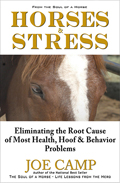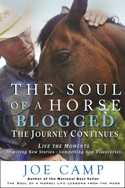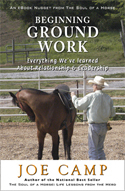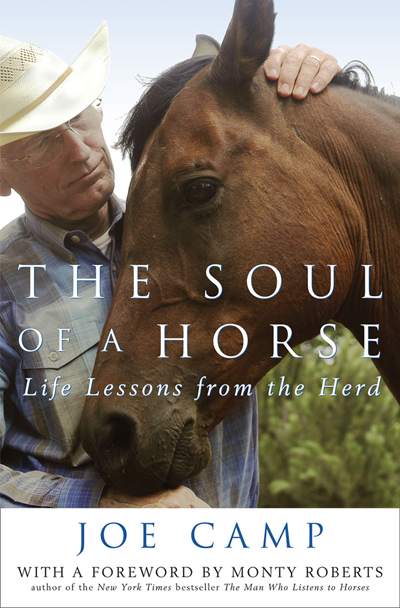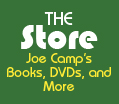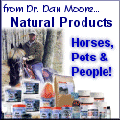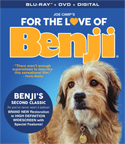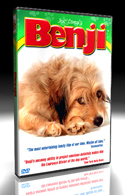Watch the Video: Relationship First
I remember that it was an unusually chilly day for late May, because I recall the jacket I was wearing. Not so much the jacket, I suppose, as the collar. The hairs on the back of my neck were standing at full attention, and the collar was scratching at them.
There was no one else around. Just me and this eleven-hundred pound creature I had only met once before. And today he was passing out no clues as to how he felt about that earlier meeting, or about me. His stare was without emotion. Empty. Scary to one who was taking his very first step into the world of horses.
If he chose to do so this beast could take me out with no effort whatsoever. He was less than fifteen feet away. No halter, no line. We were surrounded by a round pen a mere fifty feet in diameter. No place to hide. Not that he was mean. At least I had been told that he wasn’t. But I had also been told that anything is possible with a horse. He’s a prey animal, they had said. A freaky flight animal that can flip from quiet and thoughtful to wild and reactive in a single heartbeat. Accidents happen.
I knew very little about this horse, and none of it firsthand. Logic said do not depend upon hearsay. Be sure. There’s nothing like firsthand knowledge. But all I knew was what I could see. He was big.
The sales slip stated that he was unregistered. And his name was Cash.
But there was something about him. A kindness in his eyes that betrayed the vacant expression. And sometimes he would cock his head as if he were asking a question. I wanted him to be more than chattel. I wanted a relationship with this horse. I wanted to begin at the beginning, as Monty Roberts had prescribed. Start with a blank sheet of paper, then fill it in.
Together.
I’m not a gambler. Certainty is my mantra. Knowledge over luck. But on this day I was gambling.
I had never done this before.
I knew dogs.
I did not know horses.
And I was going to ask this one to do something he had probably never been asked to do in his lifetime. To make a choice. Which made me all the more nervous. What if it didn’t work?
What if his choice was not me?
I was in that round pen because a few weeks earlier my wife, Kathleen, had pushed me out of bed one morning and instructed me to get dressed and get in the car.
“Where are we going?” I asked several times.
“You’ll see.”
Being the paranoid, suspicious type, whenever my birthday gets close, the ears go up and twist in the wind.
The brain shuffled and dealt. Nothing came up.
We drove down the hill and soon Kathleen was whipping in at a sign for the local animal shelter.
Another dog? I wondered. We have four. Four’s enough.
She drove right past the next turn for the animal shelter and pulled into a park. There were a few picnic tables scattered about. And a big horse trailer.
The car jerked to a stop and Kathleen looked at me and smiled. “Happy birthday,” she said.
“What?” I said. “What??”
“You said we should go for a trail ride sometime.” She grinned. “Sometime is today.”
Two weeks later we owned three horses.
We should’ve named them Impulsive, Compulsive, and Obsessive.
Our house was way out in the country and it came with a couple of horse stalls, both painted a crisp white, one of them covered with a rusty red roof. They were cute. Often, over the three years we had lived there, we could be found in the late afternoon sitting on our front porch, looking out over the stalls, watching the sun sink beneath the ridge of mountains to the west. One of us would say “Those stalls surely seem empty.” Or, “Wouldn’t it be nice if there were a couple of horses ambling back and forth down in the stalls?”
Like a postcard.
A lovely picture at sunset.
With cute horse stalls.
Lesson #1: Cute horse stalls are not adequate reason to purchase three horses.
Never mind the six we own now.
We had no idea what we were getting into. Thank God for a chance meeting with Monty Roberts. Well, not a real meeting. We were making the obligatory trip that new horse owners must make to Boot Barn when Kathleen picked up a California Horse Trader. As we sat around a table watching the kids chomp cheese burgers, she read an article about Monty and passed it over to me. That’s how I came to find myself in a round pen that day staring off our big new Arabian.
Monty is an amazing man, with an incredible story. His book The Man Who Listens to Horses has sold something like five and a half million copies and was on the New York Times best-seller list for 58 weeks! I ordered his book and a DVD of one of his Join-Up demonstrations the minute I got home, and was completely blown away. In the video, he took a horse that had never had as much as a halter on him, never mind a saddle or rider, and in thirty minutes caused that horse to choose to be with him, to accept a saddle, and a rider, all with no violence, pain, or even stress to the horse!
Thirty minutes!
It takes “traditional” horse trainers weeks to get to that point, the ones who still tie horses legs together and crash them to the ground, then spend days upon days scaring the devil out of them, proving to the horse that humans are, in fact, the predators he’s always thought we were. They usually get there, these traditional trainers, but it’s by force, and submission, and fear. Not trust, or respect.
Or choice.
In retrospect, for me, the overwhelming key to what I saw Monty do in thirty minutes, is the fact that the horse made the decision, the choice. The horse chose Monty as a herd member and leader. And from that point on, everything was built on trust, not coercion. And what a difference that makes.
And it was simple.
Not rocket science.
I watched the DVD twice and was off to the round pen.
It changed my life forever.
This man is responsible for us beginning our relationship with horses as it should begin, and propelling us onto a journey of discovery into a truly enigmatic world. A world that has reminded me that you cannot, in fact, tell a book by its cover; that no “expert” should ever be beyond question just because somebody somewhere has given him or her such a label. That everybody and everything is up for study. That logic and good sense still provide the most reasonable answers, and still, given exposure, will prevail.
It’s a mystery to me how people can ignore what seems so obvious, so logical, simply because it would mean change. Even though the change is for the better. I say look forward to the opportunity to learn something new. Relish and devour knowledge with gusto. Always be reaching for the best possible way to do things. It keeps you alive, and healthy, and happy. And makes for a better world.
Just because something has always been done a certain way does not necessarily mean it’s the best way, or the correct way, or the healthiest way for your horse, or your relationship with your horse, or your life. Especially if, after asking a few questions, the traditional way defies logic and good sense, and falls short on compassion and respect.
The truth is too many horse owners are shortening their horses’ lives, degrading their health, and limiting their happiness by the way they keep and care for them. But it doesn’t have to be that way. Information is king. Gather it from every source, make comparisons, and evaluate results. And don’t take just one opinion as gospel. Not mine or anyone else’s. Soon you’ll not only feel better about what you’re doing, you’ll do it better. And the journey will be fascinating.
We were only a year and a half into this voyage with horses as these words found their way into the computer, but it was an obsessive, compulsive year and a half, and the wonderful thing about being a newcomer is that you start with a clean plate. No baggage. No preconceptions. No musts. Just a desire to learn what’s best for our horses, and our relationship with them. And a determination to use logic and knowledge wherever found, even if it means exposing a few myths about what does, in fact, produce the best results.
Cash was pawing the ground now, wondering, I suspect, why I was just standing there in the round pen doing nothing. The truth is I was reluctant to start the process. Nervous. Rejection is not one of my favorite concepts. Once started, I would soon be asking him to make his choice. What if he said no? Is that it? Is it over? Does he go back to his previous owner?
I have often felt vulnerable during my sixty-eight years, but rarely this vulnerable. I really wanted this horse to choose me.
What if I screw it up? Maybe I won’t do it right. It’s my first time. What if he runs over me? Actually, that was the lowest on my list of concerns because Monty’s Join-Up process is built on the language of the horse, and the fact that the raw horse inherently perceives humans as predators. Their response is flight, not fight. It’s as automatic as breathing.
Bite the bullet, Joe, I kept telling myself. Give him the choice.
I had vowed that this would be our path. We would begin our relationship with every horse in this manner. Our way to true horsemanship, which, as I would come to understand, was not about how well you ride, or how many trophies you win, or how fast your horse runs, or how high he or she jumps.
I squared my shoulders, stood tall, looked this almost sixteen hands of horse straight in the eye, appearing as much like a predator as I could muster, and tossed one end of a soft long-line into the air behind him, and off he went at full gallop around the round pen. Just like Monty said he would.
Flight.
I kept my eyes on his eyes, just as a predator would. Cash would run for roughly a quarter of a mile, just as horses do in the wild, before he would offer his first signal. Did he actually think I was a predator, or did he know he was being tested? I believe it’s somewhere in between, a sort of leveling of the playing field. A starting from scratch with something he knows ever so well. Predators and flight. A simulation, if you will. Certainly he was into it. His eyes were wide, his nostrils flared. At the very least he wasn’t sure about me, and those fifty-five million years of genetics were telling him to flee.
It was those same genetics that caused him to offer the first signal. His inside ear turned and locked on me, again as Monty had predicted. He had run the quarter of a mile that usually preserves him from most predators; and I was still there, but not really seeming very predatory. So now, instead of pure reactive flight, he was getting curious. Beginning to think about it. Maybe he was even a bit confused. Horses have two nearly separate brains. Some say one is the reactive brain and the other is the thinking brain. Whether or not that’s true physiologically, emotionally it’s a good analogy. When they’re operating from the reactive side, the rule of thumb is to stand clear until you can get them thinking. Cash was now shifting. He was beginning to think. Hmm, maybe this human is not a predator after all. I’ll just keep an ear out for a bit. See what happens.
Meanwhile, my eyes were still on his eyes, my shoulders square, and I was still tossing the line behind him.
Before long, he began to lick and chew. Signal number two. I think maybe it’s safe to relax. I think, just maybe, this guy’s okay. I mean, if he really wanted to hurt me, he’s had plenty of time, right?
And, of course, he was right. But, still, I kept up the pressure. Kept him running. Waiting for the next signal.
It came quickly. He lowered his head, almost to the ground, and began to narrow the circle. Signal number three. I’ll look submissive, try to get closer, see what happens. I think this guy might be a good leader. We should discuss it.
He was still loping, but slower now. Definitely wanting to negotiate. That’s when I was supposed to take my eyes off him, turn away, and lower my head and shoulders. No longer predatorial, but assuming a submissive stance of my own, saying Okay, if it’s your desire, come on in. I’m not going to hurt you. But the choice is yours.
The moment of truth. Would he in fact do that? Would he make the decision, totally on his own, to come to me? I took a deep breath, and turned away.
He came to a halt and stood somewhere behind me.
The seconds seemed like hours.
“Don’t look back,” Monty had warned. “Just stare at the ground.”
A tiny spider was crawling across my new Boot Barn boot. The collar of my jacket was tickling the hairs on the back of my neck. And my heart was pounding. Then a puff of warm, moist air brushed my ear. My heart skipped a beat. He was really close. Then I felt his nose on my shoulder… the moment of Join-Up. I couldn’t believe it. Tears came out of nowhere and streamed down my cheeks. I had spoken to him in his own language, and he had listened… and he had chosen to be with me. He had said I trust you.
I turned and rubbed him on the face, then walked off across the pen. Cash followed, right off my shoulder, wherever I went.
Such a rush I haven’t often felt.
I was no longer a horse owner. I was a companion. A leader. A trusted friend. And I promised him that his life with me would be the very best that I could possibly make it.
I had no clue what the very best might be but I vowed to him I would find out.
And what a difference it has made as this newcomer has stumbled his way through the learning process. Cash has never stopped trying, never stopped listening, never stopped giving.
Nor have I.
The above is an edited excerpt from the best selling book
The Soul of a Horse – Life Lessons from the Herd.
Why are we still where we are today, with so many owners of horses missing the very best part of horse ownership? The reason, I believe, is that most people do not begin at the beginning. They want to start halfway around the track, instead of in the starting gate.
I now have a horse. I want to do something with it. Go riding. Compete. Something!
We humans are in such a hurry that there’s no time to build a relationship. To learn to communicate. To gain and give understanding. To walk in the horse’s boots, so to speak.
To begin at the beginning.
The beginning for us was building relationship through our discovery of Monty Roberts and his Join-Up process.
Why?
I ask that question a lot.
To a fault.
Kathleen says it often seems that why is the only word I know.
Whyyyy?
So, why do I feel so strongly about Monty Roberts’ Join-Up?
Because it answers the why questions right up front:
Why does it work?
Because it speaks to the horse’s genetics in the horse’s own language, the language of the herd. Which is all built upon the fact that the horse is a prey animal, a flight animal. And safety and security are his number one concern, at the top of his forever wish list. The horse would always rather be in a safe and secure relationship than not.
Why do you say anyone can do it?
Because it’s simple. Easy to accomplish. Straight to the point, using a very specific “1-2-3” kind of “to-do” list that anyone can understand and handle. I managed to accomplish Join-Up after watching Monty’s DVD only twice (previous chapter).
Why does it cause the horse to – as you say – change forever?
Because the horse does the joining-up of his own free will. He chooses you, not vice-versa. It’s his choice whether or not to say to you I trust you to be my leader. If you in any way coerce the horse into being close to you, into accepting you or your training, there will be no change in the horse. The willingness, the “try” will not be there.
But… once the Join-Up has been accomplished of the horse’s choice, continuing to be a good leader is the number one goal. The determining factor of who leads who in the herd is who moves who. That means ground work on your part, and lots of it. And this is where a lot of folks get into trouble and don’t understand the outcome.
Many like to think that once Joined-Up the horse is going to be like a smoochie puppy. It’s all going to be cuddles and hugs and kisses. But a horse is not a smoochie puppy, not even close. The horse’s idea of a good relationship, first and foremost, is a feeling of safety. The security of knowing he is being lead by a good leader who will keep him safe. The horse doesn’t fall in love with the horse above him in the herd, or out of love with the one below him. And this is difficult for most humans to grasp. They want relationship to be an emotional thing, but it simply isn’t in the life and language of the herd. Yes, they can like being with you, but mostly it’s about security.
Not to say that once the horse’s security, his trust, is well in place there won’t be a bond. There will be. Very much so. It’ll just be different than what most humans perceive as a bond. There could even be a shared hug or kiss here and there with some horses, but not necessarily with all horses. It depends upon the personality of the horse. We have six and they’re all different. Some show moments of affection, some not so much. But the bond and relationship is strong with all of them.
And because of Join-up they all give back, try harder, and are more willing. And they all feel safe and comfortable when with Kathleen or myself.
What your relationship turns into after Join-Up depends upon you and how good a leader your are. In other words, how well and how easily you can move the horse’s every-body-part whenever and wherever you want. Another concept that is sometimes hard for humans to grasp: the simple idea that who moves who can determine leadership, bolster relationship, and select one’s place in the herd.
Is Monty’s Join-Up in a round pen the only way to begin a relationship with your horse?
No, of course not. There are more ways to Join Up than one can count.
Our Mouse had not been exposed to the round pen join-up when she made her choice to Join Up. It all happened with Monty in a “square pen”. In Iowa it took six men to get Mouse into a trailer to come to Monty. It took Monty ten minutes to convince her, using her language, to come to him and say I trust you to be my leader. A moment later Monty was addressing his group of students using Mouse’s back as a podium to lean on. Just amazing.
Saffron, our new mustang who came to us pregnant, from the wild via the BLM, made her choice on the evening of my birthday as Kathleen and I sat in her paddock during our regular No-Agenda Time. Like a switch was thrown. From zero to a hundred in an instant. See our blog post: An Amazing Birthday Gift from a Wild Mustang.
But every version of Join Up that truly works depends upon those two key ingredients that must be present or the relationship will never be what it should be, what it could be.
It must be the horse’s choice to trust you or not, to be in relationship with you, or not. And you must continue prove to the horse that you are his leader, a good leader. In his language. Those two ingredients are Monty’s secret ingredients. No one else, in my experience, has ever made it as clear or as simple as Monty.
Pat and Linda Parelli have their own way of accomplishing the same end relationship with their horses, which definitely includes giving the horse the choice to trust and be in relationship. They just don’t call it join-up and it’s not as simple or as “1-2-3” as Monty’s Join-Up.
Another thing about Join-Up that I find to be very cool is that very recently The International Society of Equitation Science published a scientific study comparing Monty’s Join-Up to a conventional training method used in the United Kingdom and found that the heart rates observed from Monty Roberts trained horses during first saddle and first rider were not only significantly lower than the conventional method, they were the lowest reported for any training regime reported in the literature to date. Further reporting that the technique of Join-up has been frequently criticized and reported in the literature to be a significant stressor due to the perceived opinion that this method overtly activates the flight response, the study could find no evidence that the use of the round pen or, indeed the technique of Join-up, was fear inducing and thus a significant stressor to the horse based on heart rate alone. “In fact, we found that the heart rate of horses during this technique were considerably below the maximum heart rate for horses of this age and breed.”
Still further, after 20 days of training (30 minutes/horse/day) the study horses undertook a standardized ridden obstacle and flatwork test and a ridden freestyle test. Monty’s trained horses scored significantly higher in all three tests as determined by a panel of judges who were unaware of the study or the trainers involved in the study.
The bottom line is that when we put in the time and effort, when we got the relationship and leadership right, when we did it from the horse’s end of the lead rope, not our own, our horses changed.
Every one of them.
Each differently perhaps, but change they did.
And always for the better.
Like Cash in the beginning, the others have never stopped trying, never stopped listening, never stopped giving.
Why would we do it any other way?
Buy ’em – Try ’em
Save 10% by clicking this link
and using the coupon code JOECAMP10 at checkout
Read More
Download Flyer
Send a copy of your Omega Nibblers email purchase confirmation to
nancy@thesoulofahorse.com
and receive a free PDF copy of Training with Treats!
——-
Go to TheSoulOfaHorse.com Homepage
The Soul of a Horse Video Channel on Vimeo
Visit The Soul of a Horse Channel on YouTube
——-
The story of our journey with horses (to date) is told in the two books that follow: the national best seller The Soul of a Horse – Life Lessons from the Herd and its sequel Born Wild – The Soul of a Horse.
And what a story it is as two novices without a clue stumble and bumble their way through the learning process so that hopefully you won’t have to. If you haven’t read both of these books already please do because with that reading, I believe, will come not just the knowledge of discovery but the passion and the excitement to cause you to commit to your journey with horses, to do for the horse without waiver so that your relationship and experience will be with loving, happy and healthy horses who are willing partners and who never stop trying for you. Horses like ours.
Read the National Best Seller that started it all.
Now in its 17th Printing.
National Best Seller
#1 Amazon Best Seller
#1 Amazon “Hot New Releases”
At Bookstores Everywhere
Amazon & Kindle
Barnes & Noble
Order Personally Inscribed Copies of The Soul of a Horse
Order Both The Soul of a Horse & Born Wild – Save 20%
Both Personally Inscribed
Please list the names for each inscription in the “instructions to Seller” field as you check out!
Read More About The Soul of a Horse
Watch The Soul of a Horse Trailer
The highly acclaimed best selling sequel to
The Soul of a Horse – Life Lessons from the Herd
#1 Amazon Best Seller
#1 Amazon “Hot New Releases”
Amazon & Kindle
B&N
Order Personally Inscribed Copies of Born Wild
Order Both The Soul of a Horse & Born Wild – Save 20%
Both Personally Inscribed
Please list the names for each inscription in the “instructions to Seller” field as you check out!
Read More About Born Wild
Read More About The Soul of a Horse
Watch The Soul of a Horse Trailer
Watch the Born Wild Trailer
“Joe Camp is a master storyteller.” – The New York Times
“One cannot help but be touched by Camp’s love and sympathy for animals and by his eloquence on the subject.” – Michael Korda, The Washington Post
“Joe Camp is a natural when it comes to understanding how animals tick and a genius at telling us their story. His books are must-reads for those who love animals of any species.” – Monty Roberts – Author of New York Timers Best-seller The Man Who Listens to Horses
“Camp’s tightly-written, simply-designed and powerfully drawn chapters often read like short stories that flow from the heart.” Jack L. Kennedy – The Joplin Independent
“Joe Camp is a gifted storyteller and the results are magical. Joe entertains, educates and empowers, baring his own soul while articulating keystone principles of a modern revolution in horsemanship.” – Rick Lamb – TV/Radio host – The Horse Show
Watch The Soul of a Horse Book Trailer
Read More About Horses, Benji, Goals in Life: joecamp.info
Go to TheSoulOfaHorse.com Homepage



